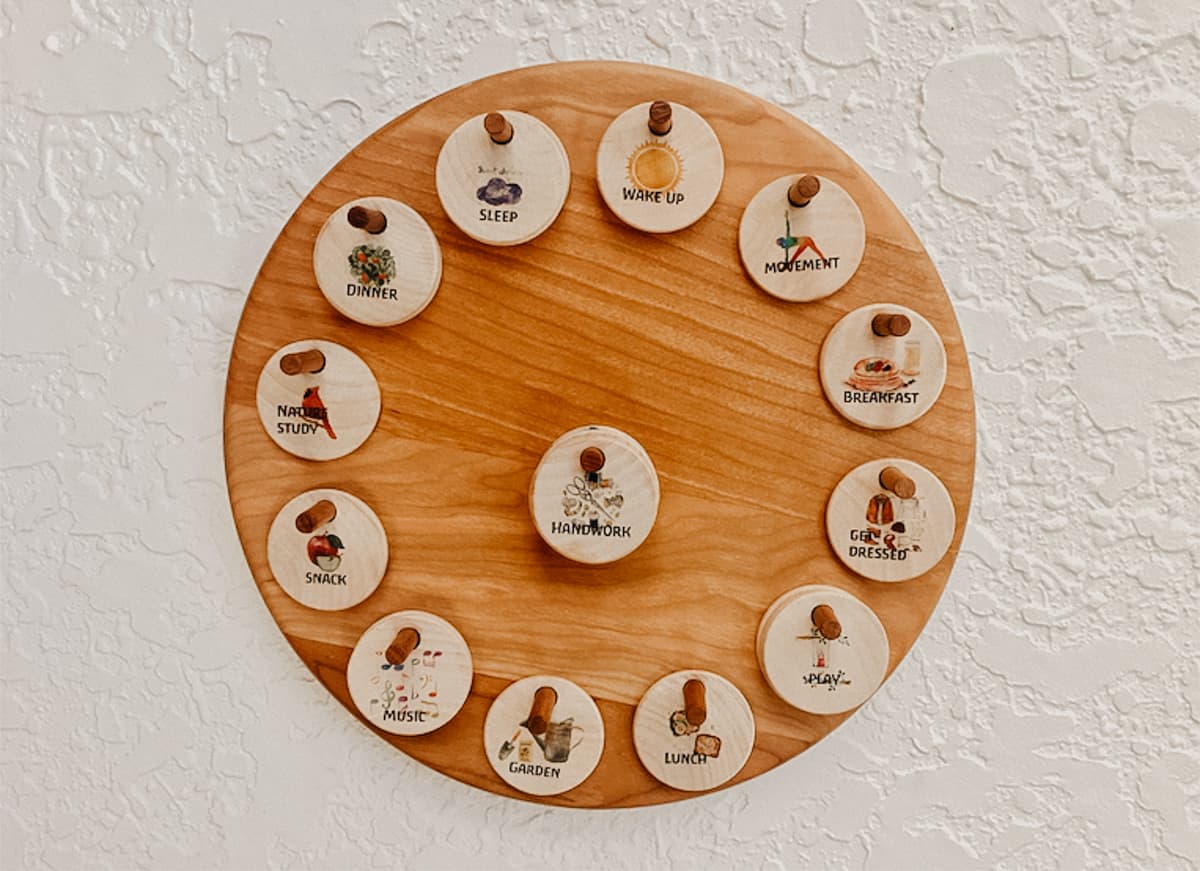
"It doesn't take exceptional effort to live with intention. On the contrary, you exert more energy when focusing on the inconsequential."
- Minimalism Co
Is it that time of year for you when homeschool planning is on your mind? Or maybe you're looking to get a head start on the next year?
Disclosure of Material Connection: Some of the links in the post are “affiliate links.” This means if you click on the link and purchase the item, I will receive an affiliate commission. Amazon links are not affiliate links. You can read my full affiliate disclosure.
I believe the majority of joy I experience during the planning process comes from the approach we take as a family to homeschooling. It's an approach that's very mindful of our rhythms and routines and incorporates a lot of freedom for our children. It's also an approach that supports a growth mindset.
Homeschool planning takes some practice, but it doesn't have to be painful and it doesn't have to be inflexible.
I hope that sharing our homeschool planning process with you will inspire you to focus on simple and intentional methods of planning, and also alleviate some of the stress that many often feel while trying to map out their homeschool rhythms and routines for the upcoming year. This homeschool planning process will work for any age student or students.
The answer to that is going to be different for everyone. Some people homeschool year-round as we do, and some take a longer break during a certain time of year. That may be during the summer but it could also be at another time of year.
Developing seasonal rhythms that work for your family, and understanding any regulations that may apply to your learners will help you determine when is a good time to start planning.
For us, we usually begin some light planning over the summer so that we can acquire any items we know we'll use in the upcoming year.
You can use whatever planner fits your personal needs. You can use an electronic planner or a paper planner, a structured planner, or an unstructured planner such as a lined notebook or dot-grid paper. You can also create your own planner and customize it to suit your preferences.
Montessori Minimalist Homeschool Planning
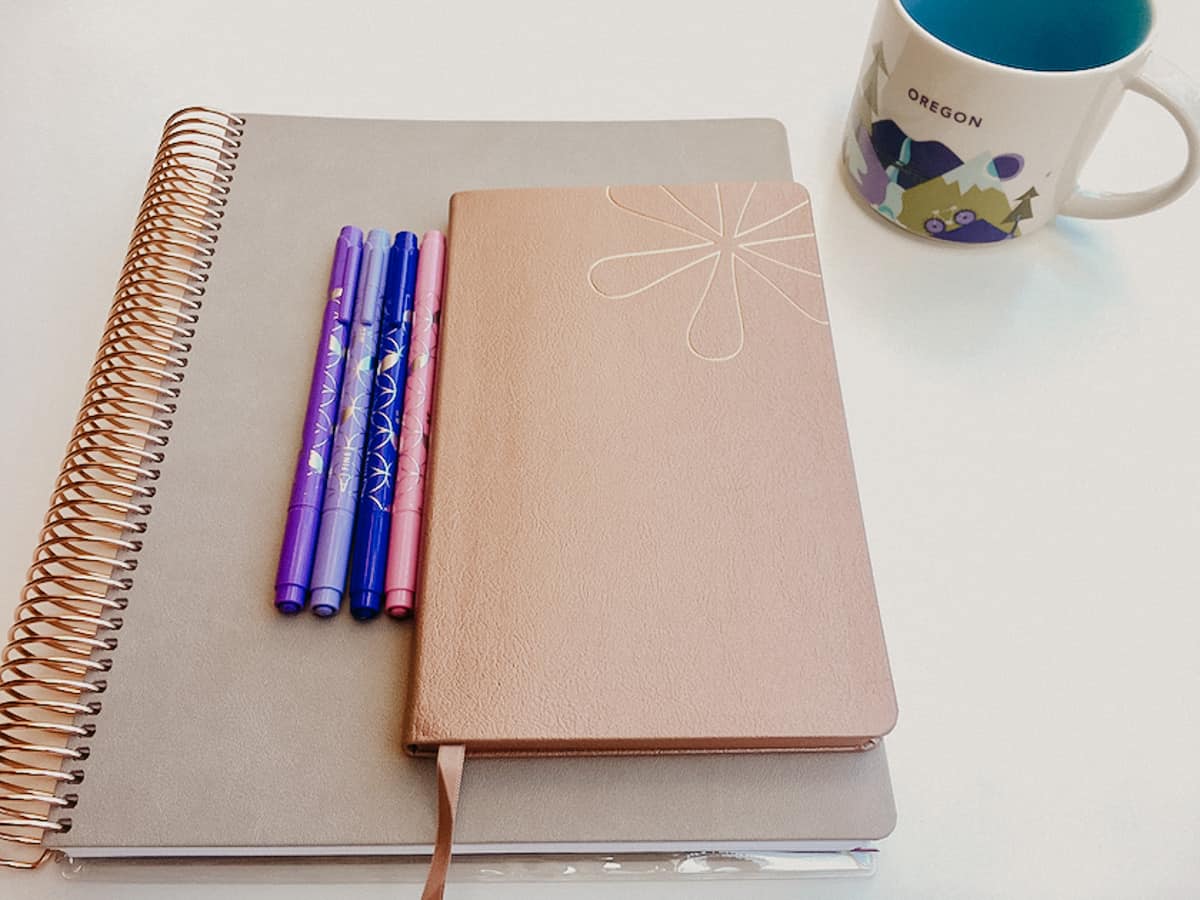
1. Gather the Necessary Planning Materials
For many, this will be your Scope and Sequence, Goals, and Planner.
I like this gray minimally-styled teacher lesson planner mostly because it has a lot of space and I find the format helpful for staying organized.
Would you like $10 off your first Erin Condren purchase?
Erin Condren
Customizable planners & accessories. Get $10 off your first order!
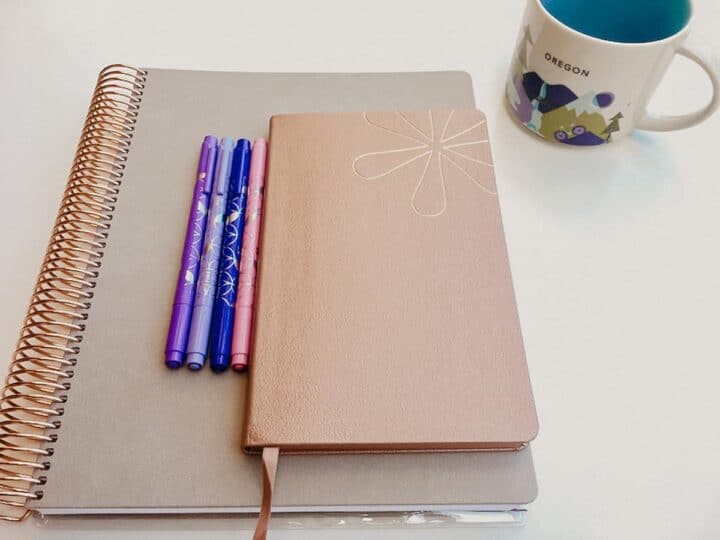
I have an extra little notebook, in addition to my planner. It's a very inexpensive dot-grid notebook and I'm going to use it to track some additional information on the side.
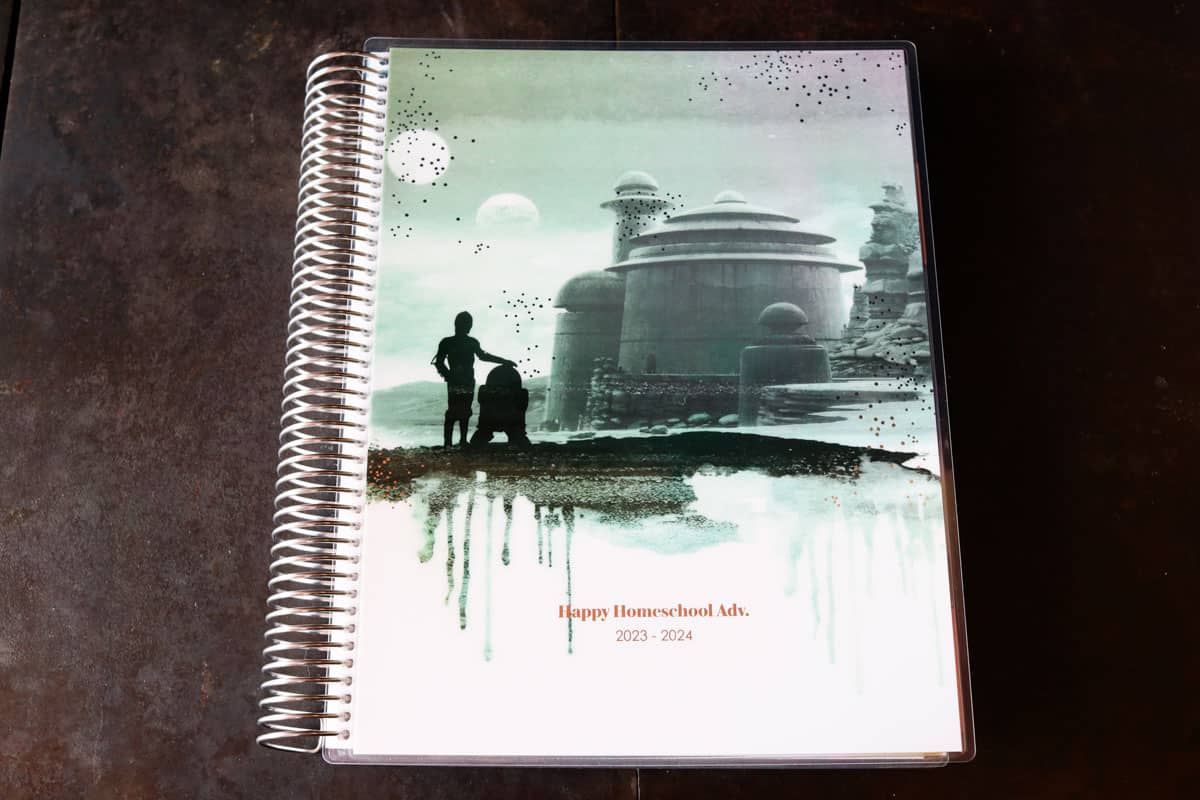
Interested in Star Wars or science fiction? Receive $10 off your first Erin Condren purchase and pick up a customizable Star Wars Metallic Tatooine Watercolor Teacher Lesson Planner.
The teacher planners are dated for you. Combined with all the little extras, such as holiday stickers, custom labels, and rulers, they will save you time throughout the year.
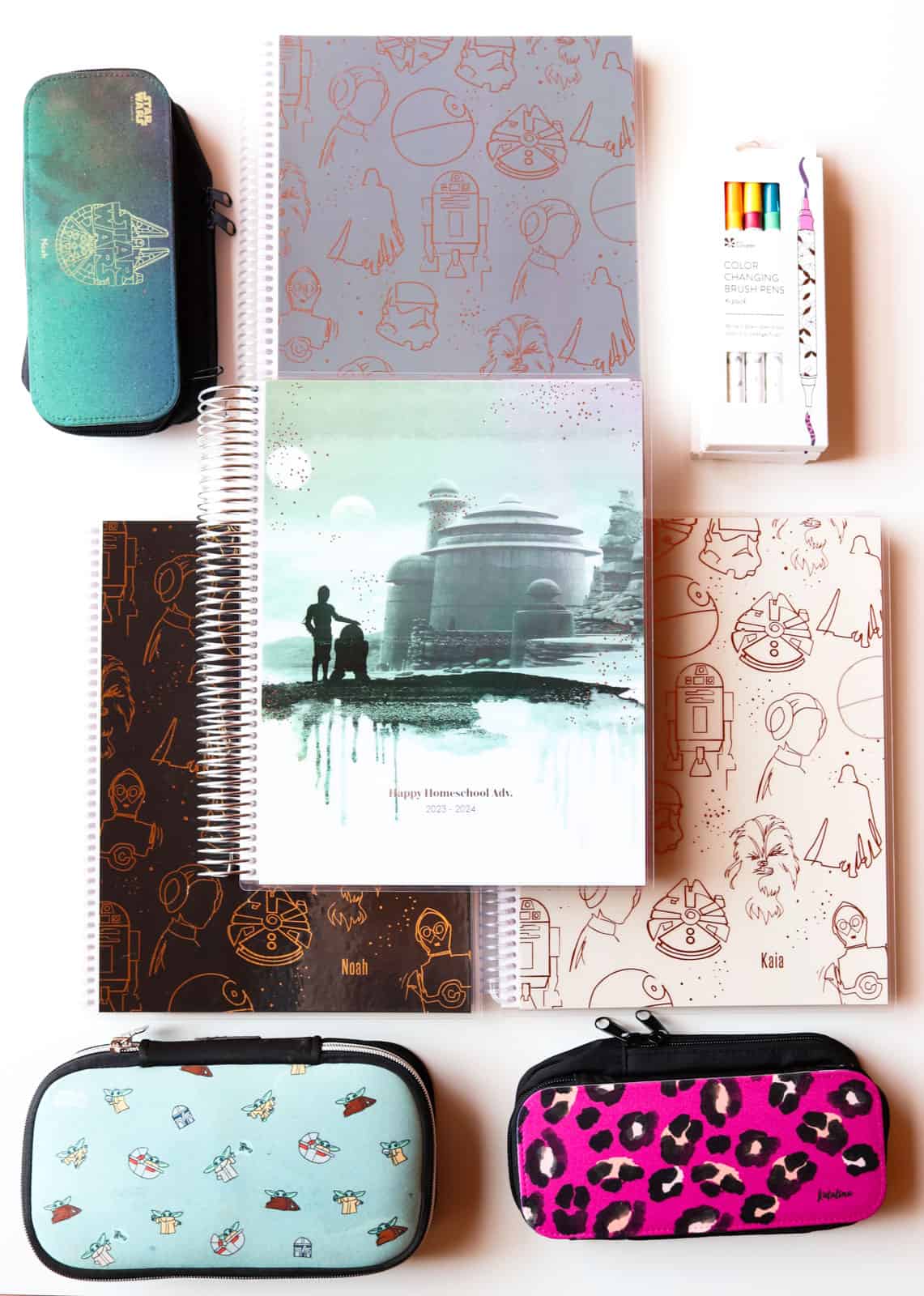
You can also pick out matching handwriting and story journals for the kids as well as pencil cases to keep all their favorite pens and markers handy.
Are you looking for a free Montessori planner?
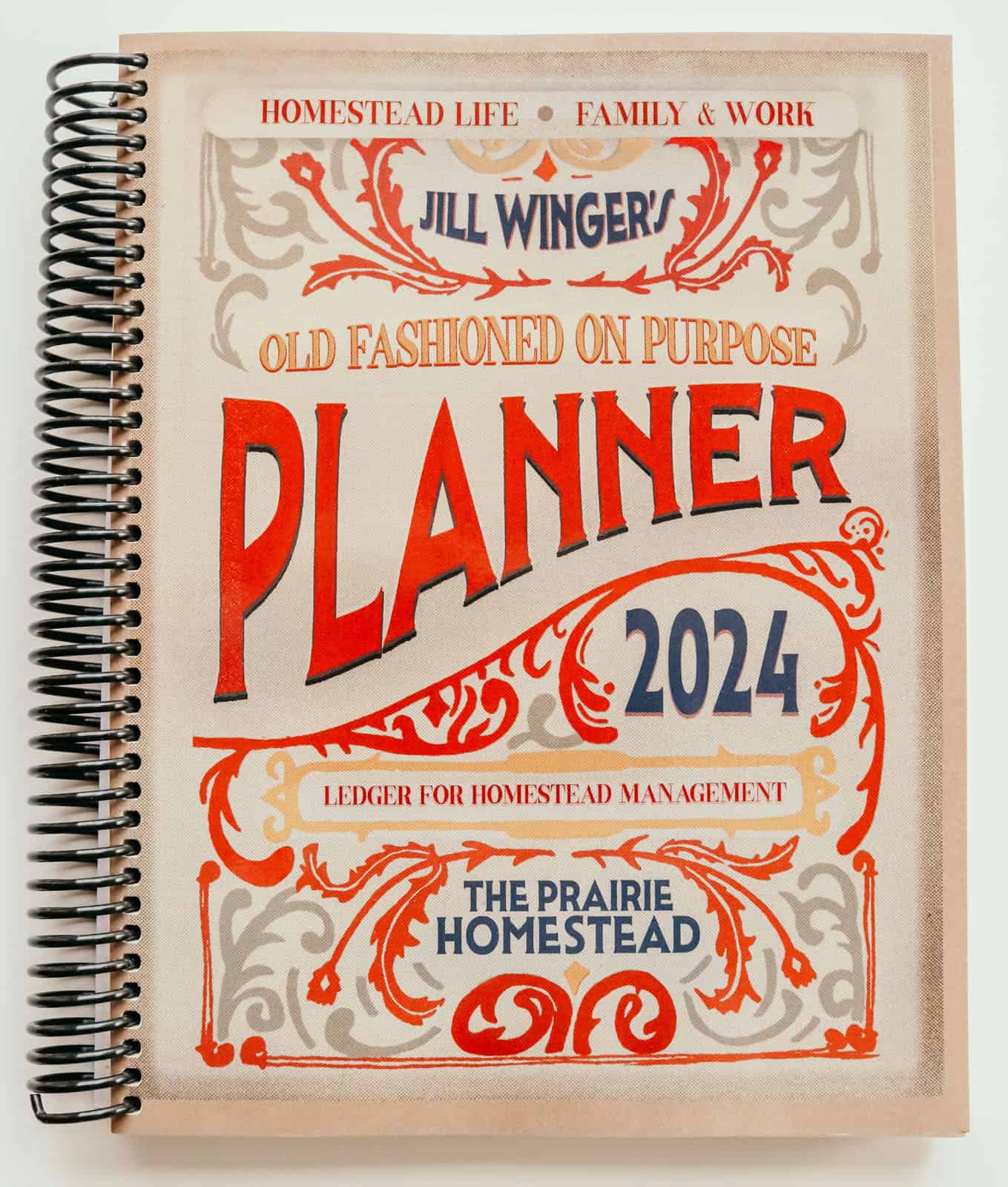
If like me, you need one planner specifically for practical life and seasonal tasks, the Old-Fashioned On Purpose Planner, is great for keeping up with seasonal rhythms related to cooking, gardening, animal care, etc.

2024 Old-Fashioned On Purpose Planner
Maintain balance and manage your homestead with this helpful planner from The Prairie Homestead.
Available for a limited time!
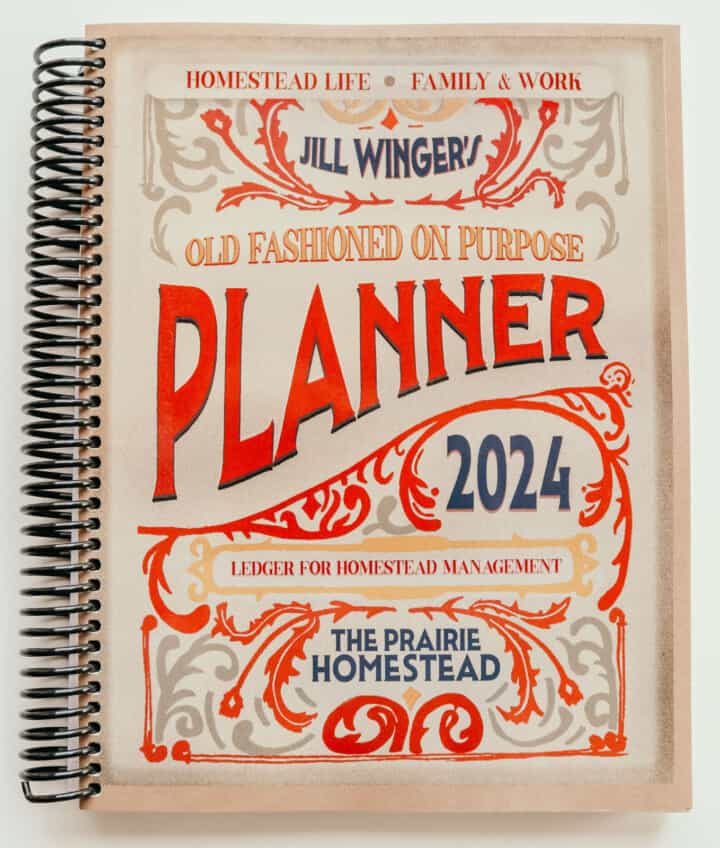
This math scope and sequence is also free and may be applicable for ages 3-12.
Montessori Math Scope & Sequence
Free Math scope and sequence for ages 3-12.
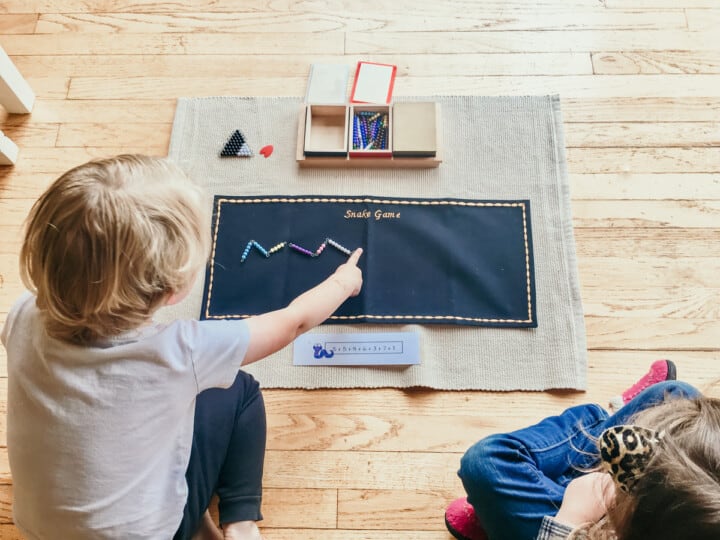
This is a free cosmic scope and sequence from Montessorikiwi for homeschoolers and classrooms of ages 6-12.
Montessori Cosmic Scope & Sequence
Free scope and sequence for elementary: ages 6-12.
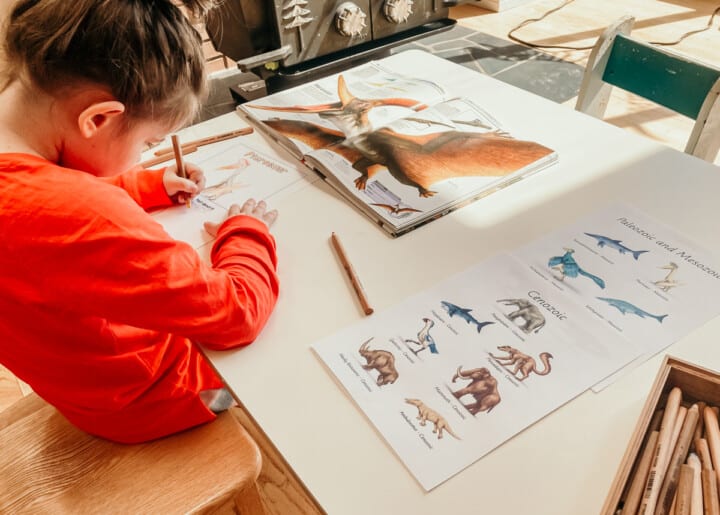
Set Goals
I've also shared in the past that we don't write specific goals for our kids, but if you do, this is where the rubber meets the road. Be careful not to write goals that are too specific. Doing that can set you up for expectations that may be unmet, depending on a thousand different variables that can enter the equation during a given academic year.
I would suggest something more general, such as: "Johnny's reading skills will improve this year as evidenced by [whatever work you're using to sharpen that skillset]" or "Sally's number recognition, number quantity, and number sequencing skills will improve this year as evidenced by her work with the Ten Boards and the Hundred Board Montessori materials." It requires having a firm understanding of where your child is currently at and then setting a realistic goal.
I should also mention that, depending on where you live, there may be certain regulations you need to include in your planning process. Make sure you've researched that as well as the registration process for your family.
Create a List
Make a list of the skills your child will master. If you're not sure about something, check out some books or ask someone. There are some great Montessori communities (free and paid subscription) available to join. Do you need help finding one?
It's important to keep in mind that Progress is the Key. If the child is progressing, fast or slow, that's still a good sign. Looking around at other kids isn't going to provide any helpful information so it's important to follow the child.
This is why we don't write specific goals. We know where our kids are at and we're able to gauge improvement in specific areas using that information. We can then compare that data to our scope and sequence to see where they're likely headed from there.
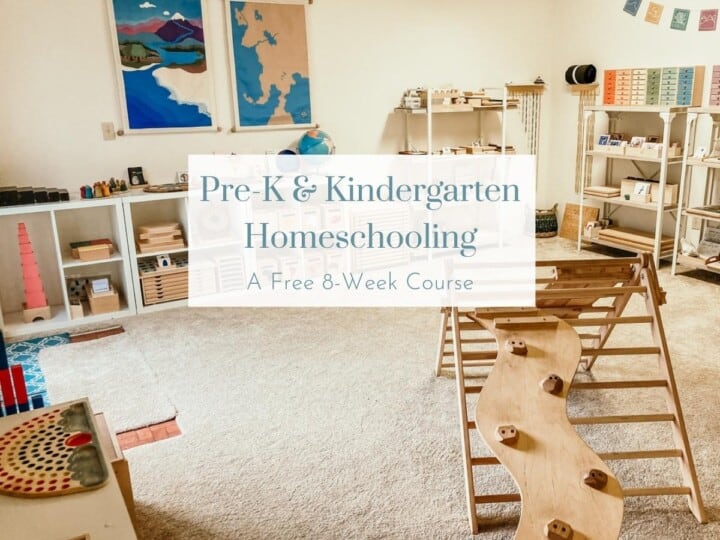
How to Homeschool
For teaching ages 2-6.
Free Pre-K & Kindergarten Homeschool Course
Would you like to learn more about how to homeschool your preschooler or kindergartener the Montessori way?
This 8-week course will provide parents and caregivers with a no-nonsense approach to homeschooling. You will learn how to homeschool using hands-on, child-centered, and diverse learning experiences.
This course covers ALL the relevant subjects. You'll receive information and insight that will help you identify what is best for your child. You'll also be introduced to plenty of free resources along the way.
Most importantly, you will walk away with the tools and resources you need to confidently begin your own homeschooling journey.
More on the primary homeschool course.
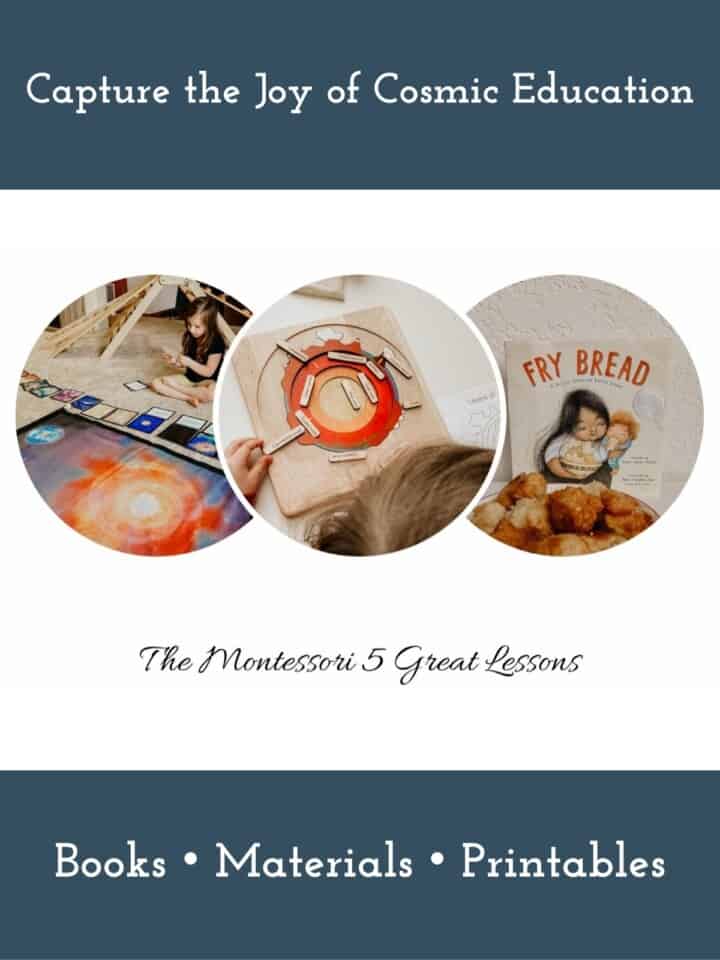
How to Homeschool Elementary
A Family-Style Approach to the Montessori Great Lessons
Free Montessori Great Lessons Series
Do you want assistance with planning your year? We've put together a FREE series on the Great Lessons for elementary and family-style learning that will take the overwhelm out of the beginning of your school year and keep you moving with ease all the way to spring.
Explore the Montessori Great Lessons, the introduction to the Cosmic Curriculum, traditionally given to Elementary students near the beginning of the school year. This free 5-part weekly email series will help you tell the story of how our universe began all the way to the origins of language and numbers.
Montessori's Five Great Lessons provide children with a contextual understanding of who they are, where they come from, and their unique purpose or cosmic task. Sounds like a big undertaking, right? Well, it doesn't have to be.
Learn more about this elementary homeschool course.
Let us help you plan your year! We've put together a series on the Great Lessons for elementary and family-style learning that will take the overwhelm out of the beginning of your school year and keep you moving with ease all the way to spring.
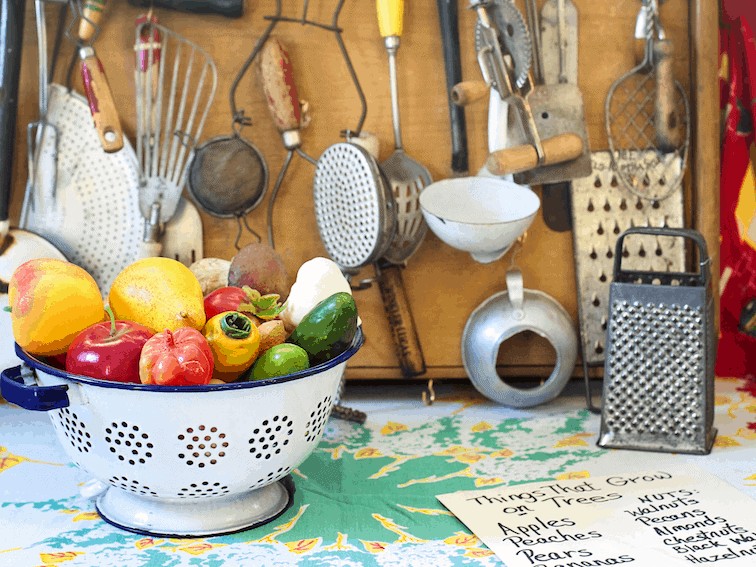
2. Take Inventory of What You Already Own
Get creative! Once you have an idea of what your child will be learning, don't run out and purchase anything right away. If you know what skills a child is working on, chances are, you can probably find some items around your home to help with mastery of those skills. Your homeschool planning should include identifying what those items are.
We were very successful at using everyday practical life items and items found in nature as a substitute for materials we didn't want to purchase when our oldest was in preschool.
For example, we didn't buy a lot of the Montessori sensorial materials such as rough and smooth boards, smelling bottles, fabric box, thermic bottles, pressure cylinders, baric tablets, or the mystery bag. The skills that are mastered with those items can also be mastered using a lot of items found in your kitchen. We saved a lot of money and space that way.
We did purchase the Montessori sound cylinders but a couple of them broke open in year 2 so we decided not to reinvest in them. Turns out, spice jars are also a very effective way of discerning sound and you can incorporate that work into the time you're already spending in the kitchen. That kind of flexibility, creativity, and spontaneity goes a long way with kids, and they'll appreciate your efforts.
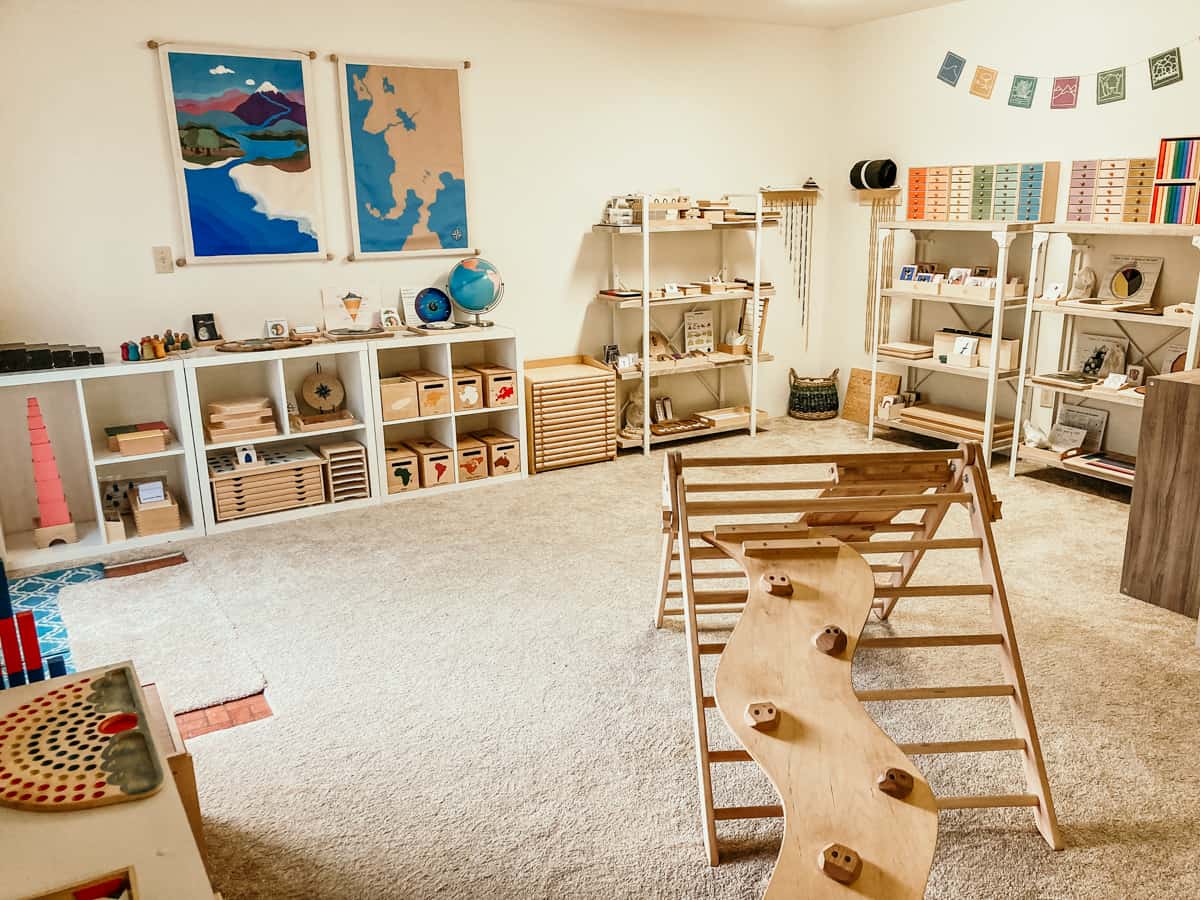
3. Purchase Materials Your Kid(s) Will Show Interest In
Education is not a one-solution-fits-all kind of thing. If you want your kids to love what they're learning, find ways to include them and their interests in your minimalist homeschool planning as much as possible. Our kids are much more likely to concentrate on a task that contains elements of a topic they're interested in.
Stop by our Montessori homeschool tour to see more of what we're using to homeschool our four kids.
Combine Subjects Where Possible
This is also a great time to look for materials that integrate more than one subject. For example, Art Appreciation that incorporates different geographical regions or unit studies that tie in several subjects will work well. Using an interdisciplinary approach reflects the interconnectedness of things and encourages a more comprehensive understanding.
Don't Rush to Replace What Isn't Working
Something to keep in mind, if you find that a child isn't showing any interest in a specific task or shelf work that you thought for sure was the perfect fit for them, don't get discouraged. It may just be the day. If the lack of interest is persistent, try to use the same kind of creativity I mentioned earlier to stimulate their interest.
One thing we always try to do is display our puzzles in pieces when possible. If it's a new puzzle, our kids want to find out what it creates or learn how to solve it. If it's not a new puzzle, they'd just rather see it put together and feel that they've completed that work before moving on to something else.
When a child is frustrated that they can't solve a puzzle or some other work, try putting it away for the next rotation and then displaying it halfway completed next time. See if that encourages the child to try again. You can always build from there and work backward to where they are eventually completing the puzzle from the beginning.
Include Printables
When going through the homeschool planning process, don't forget to check out Montessori printables. They will help you bridge any gaps and they can even be a whole comprehensive resource, in addition to any Montessori albums or curriculum resources you are using.
I've seen some really impressive printable bundles online that cover whole subject areas, if you need them. Feel free to download our free recipe printables. They combine Practical Life, Geography, History, and Culture together into one awesome global food experience.
Also, you can check out which free and affordable printables we've found the most helpful throughout our posts.
Look for Free and Discounted Resources
As I mentioned, we have several free resources that are great for various topics, including printables for kids, and printable lists for parents/educators. The library and local, state, and federal agencies also have free resources. In addition, we've found some awesome Montessori-friendly printables from other folx for free.
Craigslist and Buy-Sell-Trade groups are also opportunities to save money. Searches can be built into homeschool planning routines.
Leave Room for Growth
Finally, don't worry about having everything you need right away. It takes time and repetition for both the child and the adult to learn new things. Also, you're nurturing a child with their own unique interests and the desire for freedom of choice. You don't want to overlook that. Leave some room for them to grow and change. Less is more.

4. Be Flexible and Patient
Now, you're finally ready to start some minimalist homeschool planning. Go ahead and get excited! It's going to be a great experience for everyone. There will surely be bumps along the way, but you are deepening a meaningful connection with a wonderful little being.
Together, you will go on a journey that adds so much value to your relationship through your shared experiences. Along your journey, you will find that patience, love, acceptance, and flexibility are the keys to supporting your little one, no matter how they are doing.
Put the Montessori Homeschool Plan on Paper
Go ahead and jot down some things you might want to introduce throughout the year, starting by month. You can expand or change those plans as the time approaches and your child is showing you what they want to learn. Seasonal works are great for adding interest and value at specific times of the year.
In addition, be mindful of your family's normal rhythm and routines throughout the year. Know when you're most active as a family as opposed to when you like to slow down and rest. Plan accordingly. Don't go planning a bunch of activities around December or January if you know you guys like to rock the hygge lifestyle in the winter and knit by the fire or relax with a cup of cocoa and a good book.
Give your child as much control over their daily rhythm and routine as they can manage. When they are younger, you can empower them to complete certain routines themselves using a simple visual schedule. As they get older and they increase in their independence, their Visual Calendar can reflect that autonomy.
Visual Schedule
Customizations available for this heirloom-quality Mirus Toys Visual Schedule!
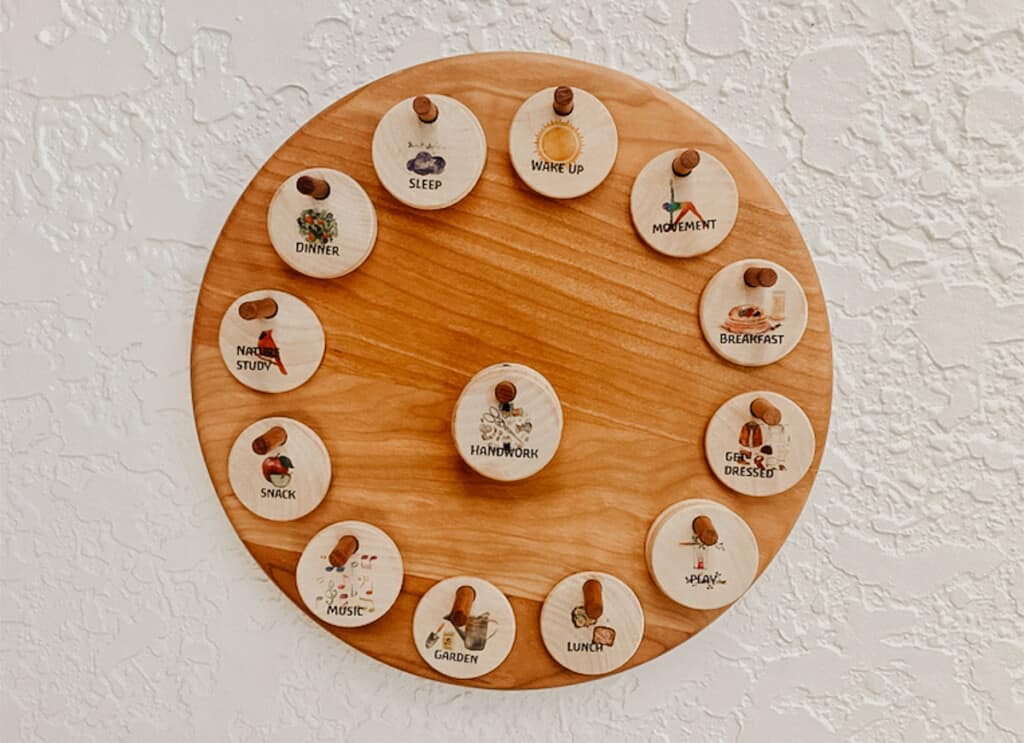
Above all else, know that plans will change as you make your way through the year together. And that's ok. Sometimes, it's awesome. Use your powers of observation, reflect, and make adjustments as needed. Most importantly, keep going! You may find that the goals are well within reach.
In Conclusion
I hope you've found this helpful as you sit down to do some planning of your own. Having a simple, minimalist homeschool planning routine helps us get through the process minus any frustration.
What do you think of my Montessori minimalist homeschool planning routine? How will you go about planning your homeschool year if you haven't started already? Are you stuck on something?
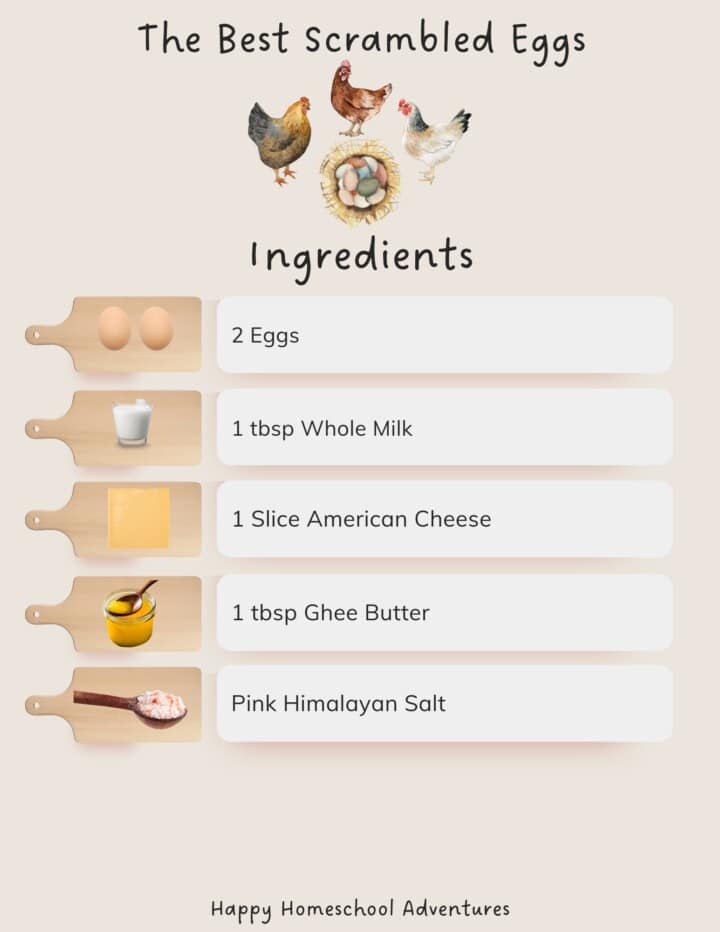
FREE Scrambled Eggs Recipe
For you to try at home!
Free Best Scrambled Eggs Recipe for Pre-Readers and Up
Grab your free printable recipe cards above. Practical life skills provide a solid foundation for young learners and these activities are perfectly suited to a prepared homeschool environment.
Kids can gather ingredients using the ingredient list, gather their equipment with the tools list, and prepare the meal using the step-by-step recipe cards with assistance as needed. The cards are easy to use, they include pictures, and they encourage confidence and independence in the kitchen.
More Seasonal Homeschool Resources
- Affordable Montessori Bookshelf Ideas for Homeschool
- Homeschool Daily Rhythm
- Summer Morning Basket
- Bucket List for Winter
Montessori Minimalist Homeschool Planning
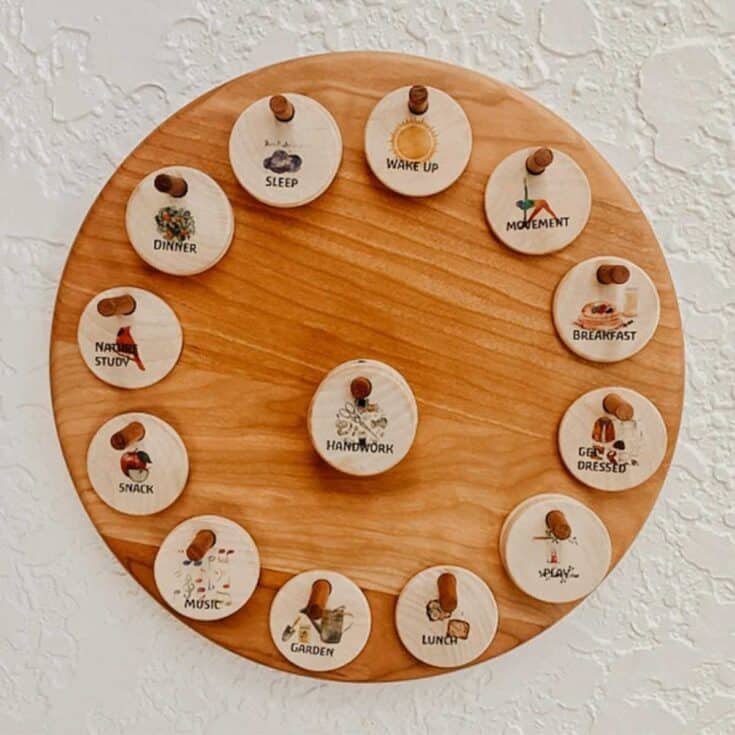
A practical Montessori approach to Minimalist Homeschool Planning that encourages independence, freedom, and a growth mindset in kids.
Materials
Tools
- See Materials List
Instructions
- Gather the necessary planning materials - Grab your scope and sequence, goals and planner(s). Set goals but be careful not to make them too specific. It requires having a firm understanding of where your child is currently at and then setting a realistic goal. Depending on where you live, there may be certain regulations you need to include in your planning process. Create a list of the skills your child will master. If you're not sure about something, check out some books or ask someone.
- Take inventory of what you already own - Get creative! Once you have an idea of what your child will be learning, don't run out and purchase anything right away. If you know what skills a child is working on, chances are, you can probably find some items around your home to help with mastery of those skills. Your homeschool planning should include identifying what those items are. Consider finding substitutes for the rough and smooth boards, smelling bottles, fabric box, thermic bottles, pressure cylinders, baric tablets, mystery bag, or sound cylinders.
- Purchase materials your kid(s) will show interest in - Education is not a one-solution-fits-all kind of thing. If you want your kids to love what they're learning, find ways to include them and their interests in your minimalist homeschool planning as much as possible. You can use our Primary and Elementary curriculum resources to identify what you'd like to add to your environment. Look for materials that integrate more than one subject. Don't rush to replace what isn't working. Homeschool tip: Try to display puzzles undone or unfinished to stimulate interest or completion. Be sure to include printables and look for discounted resources. We have several so feel free to explore our site. Always leave room for growth. Use the Affordable Montessori Bookshelf Ideas for Homeschool to find shelving for your space.
- Be flexible and patient - Patience, love, acceptance, and flexibility are the keys to supporting your little one, no matter how they are doing. Put the homeschool plan on paper. Jot down some things you might want to introduce throughout the year, starting by month. You can expand or change those plans as the time approaches and your child is showing you what they want to learn. Seasonal works are great for adding interest and value at specific times of year. In addition, be mindful of your family's normal rhythm and routines throughout the year. Empower kids to complete certain routines themselves using a simple Visual Schedule. Know that plans will change as you make your way through the year together. See our Homeschool Daily Rhythm for an example of a loosely-structured rhythm.
Notes
Full Planning Info and Pictures at: https://happyhomeschooladventures.com/how-to-montessori-minimalist-homeschool-planning/
Recommended Products
As a member of affiliate programs, I earn from qualifying purchases.


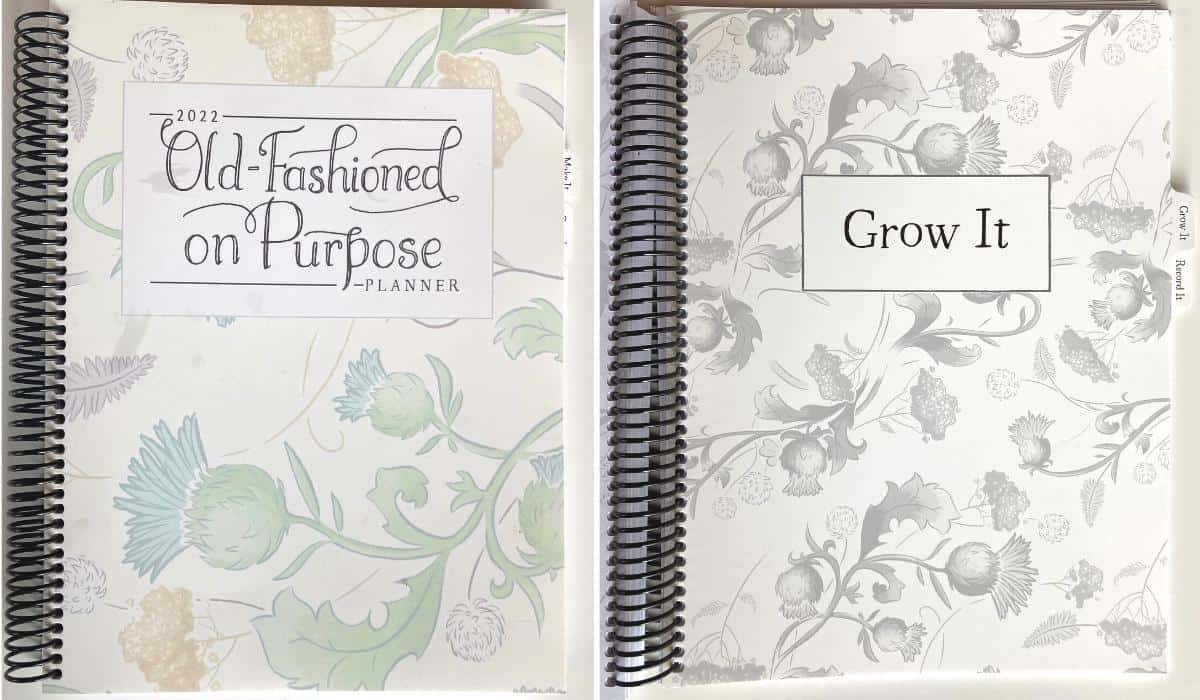
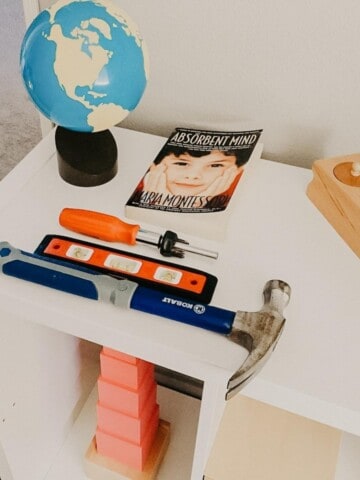

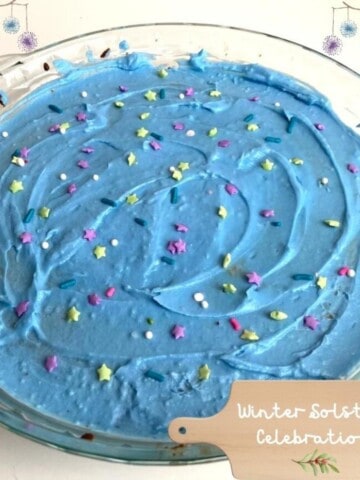

Stephanie
I love this!! Being intentional and minimal in homeschool planning is so freeing. I will have to refer back to this when we start planning our next school year. Also, loved your puzzle tip!
Dusty
So informative! I have several friends who homeschool. I will definitely pass your ideas to them. Great post!
Allie
I love this. So many of my friends kids are home schooled and I will definitely be sharing this. You have some lovely tips.